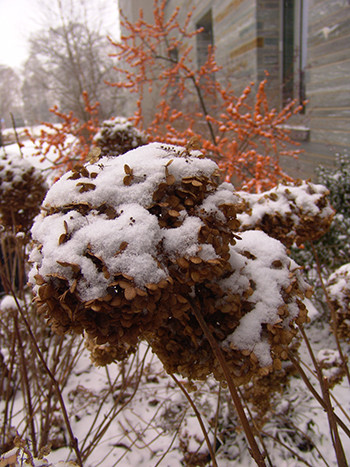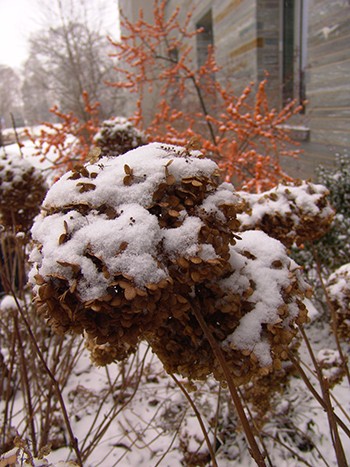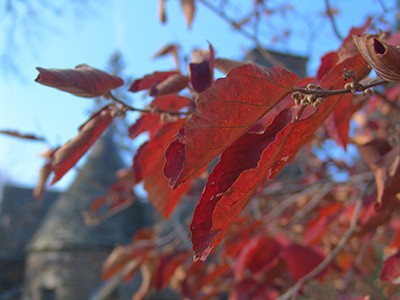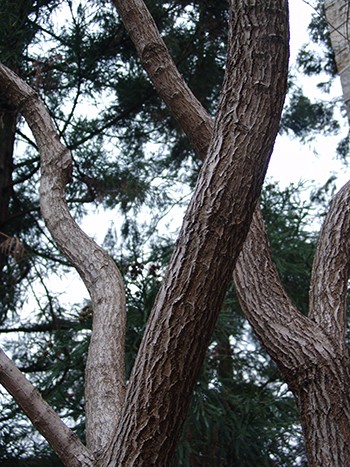
Plants of the Week: December 18
by John Bickel
Hydrangea arborescens ‘Annabelle’
Each year the Pennsylvania Horticultural Society awards plants of exceptional garden merit through their Gold Medal program. In 2001 they awarded three plants, one of which, Hydrangea arborescens ‘Annabelle’, is featured in the Gold Medal garden near Alice Paul and David Kemp residence halls.
Commonly called the “smooth hydrangea,” and less commonly “sevenbark,” H. arborescens is an Eastern North American native deciduous shrub with large, fluffy corymbs of white flowers that bloom in late summer. The cultivar ‘Annabelle’ was selected for its even larger, denser flowers, which dry and persist through winter and offer dense, tan, cloud-like, textural winter interest. photo credit: R. Robert
Hamamelis vernalis ‘Red Imp’
I usually wait until very early Spring to highlight Hamamelis cultivars, but Hamamelis vernalis ‘Red Imp’ made the cut this week for its wonderful fall colors that range from deep, flat red to luminescent pink-orange. The species Hamamelis vernalis exhibits a phenomenon called “marcescence,” which is loosely defined as a deciduous plant’s tendency to not drop dead leaves.
The leaves wither and die but are not abscised as most deciduous plant leaves are. This behavior can also be seen in many species of Quercus that seem to defiantly hold their leaves. Native to southern and central United States. This specimen can be found growing behind the Frats on Swarthmore’s Campus. photo credit: J. Bickel
Chionanthus retusus ‘Serrulatus’
The bark of the chinese fringetree Chionanthus retusus caught my eye today. Long, flat, silver, plate-like stripes are accented by shallow, dark fissures with stripes of orange. The silver popped against the tawny backdrop of the fallen needles of the Metasequoia allée.
The species name retusus refers to the leaves’ slightly indented (or “retuse”) apices. The cultivar name refers to the very finely serrated leaf margins. Sources indicate that the Chinese native C. retusus differs most from its North American counterpart (C. virginicus) in its tendency to set blooms on new wood, therefore making the light, white, airy flowers and purple-black berries easier to spot and appreciate.photo credit: J. Bickel








No Comments